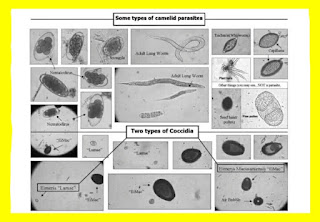Atoxoplasmosis, Disease in Bali Starling Birds that need to be watched out
SMPN1Bungkal - As one of the protected species, Jalak Bali faces problems that are generally related to its new habitat outside its original habitat. The most common problem is the increase in the spread of disease. This is due to changes in the environment of the original habitat with a wide area to a small scope of captive habitat that makes the Bali starlings susceptible to disease.
Of the several diseases that often strike Bali starlings in captivity, Atoxoplasmosis is one that you should watch out for.

In 1989, the attack of this disease was reported for the first time, although it was suspected that the Atoxoplasma problem had occurred in previous years. From existing information sources, so far Atoxoplasma attacks Bali starlings that live in overseas captivity. The germ of this disease comes from bird droppings that are sick and transmitted through the mouth of a bird.
Atoxoplasmosis infection causes black spots on both sides of the Bali starling stomach. A sign that shows enlargement of the spleen and liver. This symptom will appear in young birds less than one year old. It is possible, after an adult — a bird that has been attacked by this disease remains infected, except that the physical signs may not be seen again. Adult birds that have been infected will continue to carry this infectious disease for eight months.
The death rate of the Bali starlings that have been attacked by Atoxoplasmosis reaches 80% of young birds in one captive cage. Infected bird breeders will certainly infect their young when feeding. Both male and female sires may be a vector of disease spread.
The following are prevention efforts so that Atoxoplasmosis does not appear in captive environments.
With these steps, it is expected to reduce the development of the disease, so that the losses can be reduced and the Bali starlings which are already classified as rare can still breed well.
Of the several diseases that often strike Bali starlings in captivity, Atoxoplasmosis is one that you should watch out for.

Causes and Sources of Transmission
Atoxoplasmosis is caused by a parasite which is a species of coccidian Protozoa , Atoxoplasma . Different from coccidiosis (defecate) caused by other types of coccidian parasites whose spread is limited to the intestinal epithelium; Atoxoplasma actually multiplies in the intestine which attacks blood cells, spreads in the bloodstream which then infects the liver, lungs and spleen.In 1989, the attack of this disease was reported for the first time, although it was suspected that the Atoxoplasma problem had occurred in previous years. From existing information sources, so far Atoxoplasma attacks Bali starlings that live in overseas captivity. The germ of this disease comes from bird droppings that are sick and transmitted through the mouth of a bird.
Atoxoplasmosis infection causes black spots on both sides of the Bali starling stomach. A sign that shows enlargement of the spleen and liver. This symptom will appear in young birds less than one year old. It is possible, after an adult — a bird that has been attacked by this disease remains infected, except that the physical signs may not be seen again. Adult birds that have been infected will continue to carry this infectious disease for eight months.
Clinical Symptoms Visible
Symptoms that can be seen in young Balinese starlings include birds appear lethargic, more often curled up with feathers that expand, the stomach looks bloated, diarrhea, and birds will often approach light / light with the intention of warming their bodies. In adult Bali starlings, symptoms will develop and cause neurotic disorders that make birds look stressed.The death rate of the Bali starlings that have been attacked by Atoxoplasmosis reaches 80% of young birds in one captive cage. Infected bird breeders will certainly infect their young when feeding. Both male and female sires may be a vector of disease spread.
Prevention and Control
Until now, there are no drugs that can effectively eliminate the disease. It is estimated that Sulfachlorpyrazine and Toltrazuril are two types of drugs that can be used routinely to overcome the different life stages of Atoxoplasmosis in Balak starch, although they do not fully complete Atoxoplasma infection . While another way to do to get rid of the disease is by destroying infected birds, before the disease develops further and infects other Bali starlings.The following are prevention efforts so that Atoxoplasmosis does not appear in captive environments.
- Maintain a clean cage regularly. This can be done by regularly spraying disinfectants once a week to repel fleas, mites, bacteria, fungi and other parasites.
- Quarantine new-coming birds for several days in a special cage, separate from other captive cages and bird colonies. It is hoped that this method can detect disease and know the health condition of birds before they are put together with other birds in captivity.
- Ensuring the condition of Bali starlings is always fit, especially in terms of the adequacy of vitamins in bird food.
- Maintain hygiene of feed such as grains and other feed to prevent infection from Escerichia coli bacteria.
With these steps, it is expected to reduce the development of the disease, so that the losses can be reduced and the Bali starlings which are already classified as rare can still breed well.

Post a Comment